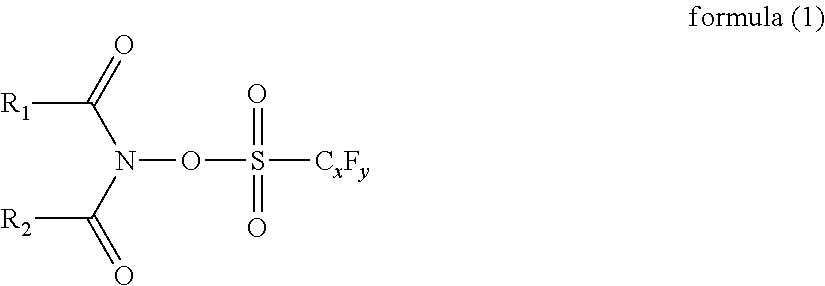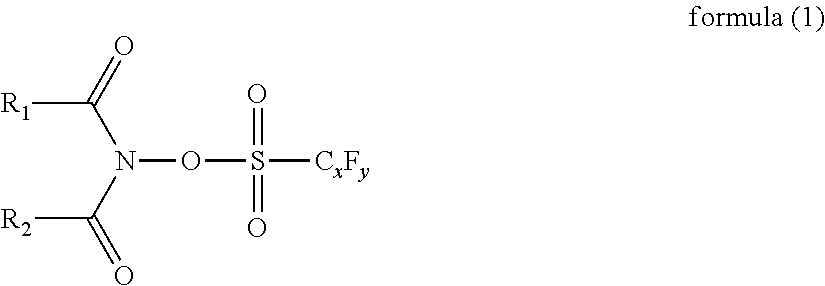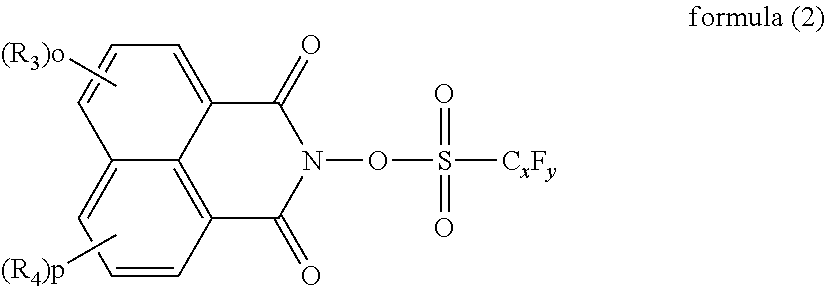Ultraviolet-curable liquid developer
a liquid developer and ultraviolet light technology, applied in the field of ultraviolet cureable liquid developers, can solve the problems of image blurring, image sharpness decline, and impaired and achieve the effect of low volume resistivity, easy drop in potential, and improved ability to obtain high image density
- Summary
- Abstract
- Description
- Claims
- Application Information
AI Technical Summary
Benefits of technology
Problems solved by technology
Method used
Image
Examples
example 1
Toner Particle Production
[0190]25 parts of Nucrel N1525 (ethylene-methacrylic acid resin, Du Pont-Mitsui Polychemicals Co., Ltd.) and 75 parts of cyclohexanedimethanol divinyl ether (example compound B-17) were introduced into a separable flask and the temperature was raised over 1 hour to 130° C. on an oil bath while stirring at 200 rpm using a Three-One motor. After holding for 1 hour at 130° C., gradual cooling was carried out at a ramp down rate of 15° C. per 1 hour to produce a binder resin dispersion. The obtained binder resin dispersion was a white paste.
[0191]59.40 parts of this binder resin dispersion, Pigment Blue 15:3 (4.95 parts) as pigment, 0.20 parts of aluminum tristearate as a charge adjuvant, and 35.45 parts of cyclohexanedimethanol divinyl ether were filled into a planetary bead mill (Classic Line P-6, Fritsch) along with zirconia beads having a diameter of 0.5 mm, and pulverization was carried out at 200 rpm for 4 hours at room temperature to obtain a toner partic...
examples 2 to 11 , examples 15 to 17
Examples 2 to 11, Examples 15 to 17, and Comparative Examples 1 to 12
[0203]Ultraviolet-curable liquid developers were obtained proceeding as in Example 1, but blending the cationically polymerizable liquid monomer, photoinitiator, photopolymerization sensitizer, and photopolymerization sensitizing aid as in Example 1 to provide the compositions given in Tables 1 and 2.
example 12
[0204]A toner particle dispersion (solids fraction=20 mass %) was obtained proceeding as in (Toner particle production) in Example 1, but changing the cyclohexanedimethanol divinyl ether (example compound B-17) to dodecyl vinyl ether (example compound B-3).
[0205]The toner particles present in the obtained toner particle dispersion had a volume-average particle diameter of 0.82 μm (measured with a Nanotrac 150 from Nikkiso Co., Ltd., a particle size distribution analyzer based on dynamic light scattering (DLS)).
(Preparation of Liquid Developer)
[0206]An ultraviolet-curable liquid developer was obtained by mixing 10.00 parts of the aforementioned toner particle dispersion; 0.10 parts of hydrogenated lecithin (Lecinol S-10, Nikko Chemicals Co., Ltd.) as a charge control agent; 1.62 parts of dodecyl vinyl ether, 4.81 parts of dicyclopentadiene vinyl ether (example compound B-8), and 81.76 parts of butylethylpropanediol divinyl ether (example compound B-27) as cationically polymerizable l...
PUM
 Login to View More
Login to View More Abstract
Description
Claims
Application Information
 Login to View More
Login to View More - R&D
- Intellectual Property
- Life Sciences
- Materials
- Tech Scout
- Unparalleled Data Quality
- Higher Quality Content
- 60% Fewer Hallucinations
Browse by: Latest US Patents, China's latest patents, Technical Efficacy Thesaurus, Application Domain, Technology Topic, Popular Technical Reports.
© 2025 PatSnap. All rights reserved.Legal|Privacy policy|Modern Slavery Act Transparency Statement|Sitemap|About US| Contact US: help@patsnap.com



